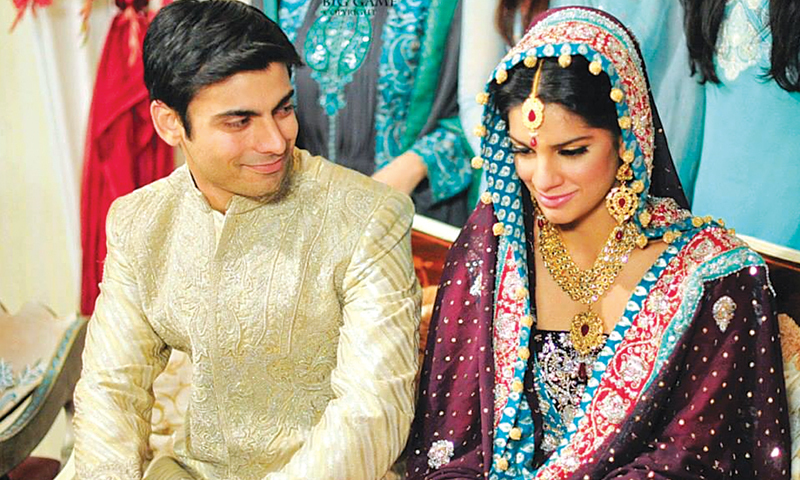It was a certain Khan Chacha, whom we never met, who used to stroll into Rainbow Centre near Empress Market in Karachi, Pakistan, to buy the bulky VHS tapes of Dhoop Kinare, Ankahee and Tanhayiyaan, back in the 1990s.
These would then reach my uncle who worked in a state-run hospital in Riyadh, Saudi Arabia. He would feast on Haseena Moin’s poetry in prose, Shahnaz Sheikh’s enticing smile and Marina Khan’s playful conduct.
Once every several years, he would return to India with his prized collection of PTV’s brilliant dramas and excitedly share them with us.
Sadly, we were still very young to enjoy them. We had to wait until Chad Hurley and Steve Chen invented YouTube, and the shows were uploaded in full on the video sharing website. And even then, the internet speed kept us wanting an uninterrupted experience. I once watched a one-hour episode of Waaris over two days owing to a slow connection.
Therefore, it amazes me to switch on the television now and see highly acclaimed dramas from across the border in the comfort of my living room. Zee TV’s new channel, Zindagi, brings us in India a choicest collection of Pakistani dramas.
 |
| 1.) Jamshed Ansari and Behroze Subzwari in Tanhayiyaan (2.) Behroze and Qazi Wajid (3.) Badar Khalil and Rahat Kazmi in Dhoop Kinare |
Two things, however, have remained unchanged over the past three decades. One is the exceptional quality of the dramas. The second is the bewilderment that Indians face when they see the similarity between Pakistani society and theirs.
Let me start with the first. Our generation of the late 1980s never really enjoyed good television in India.
By the time we grew up, the satellite boom had hit the television industry and TRP-hungry channels had started replicating formulae that were “tested”. As a result, we switched on the television to find sobbing daughters-in-law, despotic mothers-in-law and muffled yet loving husbands.
A certain section of the youth felt estranged from Indian serials on television and shifted to the easily-available American soaps.
It took YouTube and torrents to bring classic Indian and Pakistani shows to the youth. The skilful scripts, superior acting and great direction of the older Pakistani dramas (of the ’80s) began to seem unique in the sea of formulaic serials on television. I would contend that it is still the same. Some Pakistani shows bring a fresh breeze in the jungle of mediocre Indian television soaps.
Secondly, both India and Pakistan have raised an invisible iron curtain between them when it comes to exchange of cultural ideas. Way back in the ’80s, newspapers and magazines that carried stories from Pakistan to an Indian audience spoke largely about Ziaul Haq’s regime and Islamisation.
It came as a pleasurable jolt to Indian viewers to see a Pakistani drama set in 1987, in Karachi, where a young doctor cuts her hair very short, romances an older man and talks boldly about women’s rights with her male colleagues in the hospital. Dhoop Kinare might as well be set in urbane Bombay of those times.
The situation is exactly the same today. Unless one seeks out online publications from Pakistan, the mainstream media only gives a sustained coverage of the political turmoil in Pakistan, its relations with India and the fragile situation in Afghanistan. We rarely ever understand the life of an average Pakistani.
When we saw a modern yet conservative Zaroon in Zindagi Gulzar Hai, it sure felt like many Indian men. In this age where women are no longer reliant on their partners for their basic necessities and carve identities of their own, the men in the subcontinent are growing equally liberal and conservative at the same time. Similarly, for someone who only gets to read about the diktats of the Pakistani Taliban on its women, it is a nice surprise to see a liberal, strong-willed character that Sanam Saeed plays in the drama.
To see that the Pakistani society, culture, food and language are so similar to certain parts of India still baffles some Indians, especially of the younger generation who are only familiar with Pakistan through their textbooks.
Here’s hoping that the entry of Pakistan’s best television serials into India would bring about much-needed changes to the Indian television scene as well.
Shows like Kitni Girhein Baaki Hain which are captivating the imagination of several Indians can prove to Indian producers that they could make money even if they step out of the boundaries of a formula story. Also, our audience is equally appreciative of subtlety and sensitivity. We do not need brazen speech and in-your-face emotions to enjoy a TV serial.
Some of the Pakistani shows have new, amazing camera angles, extreme close-up shots, very shallow depth of field (blurring the background while bringing sharp focus on one person) andare presumably shot with a HD SLR camera. This adds a unique look and feel to the shows. Such changes in the technical aspects should also encourage Indian producers to boldly move away from the garish make-up, boring mid-shots and blaring background music of most of their soaps.
Observing the overwhelming response to good television shows from Pakistan makes me want to believe that it is only a matter of time before Indian producers come up with consistent, good programming.
Published in: Dawn
Published on: September 13, 2014
Link: https://www.dawn.com/news/1131514/prime-time-showing-india-how-its-done


